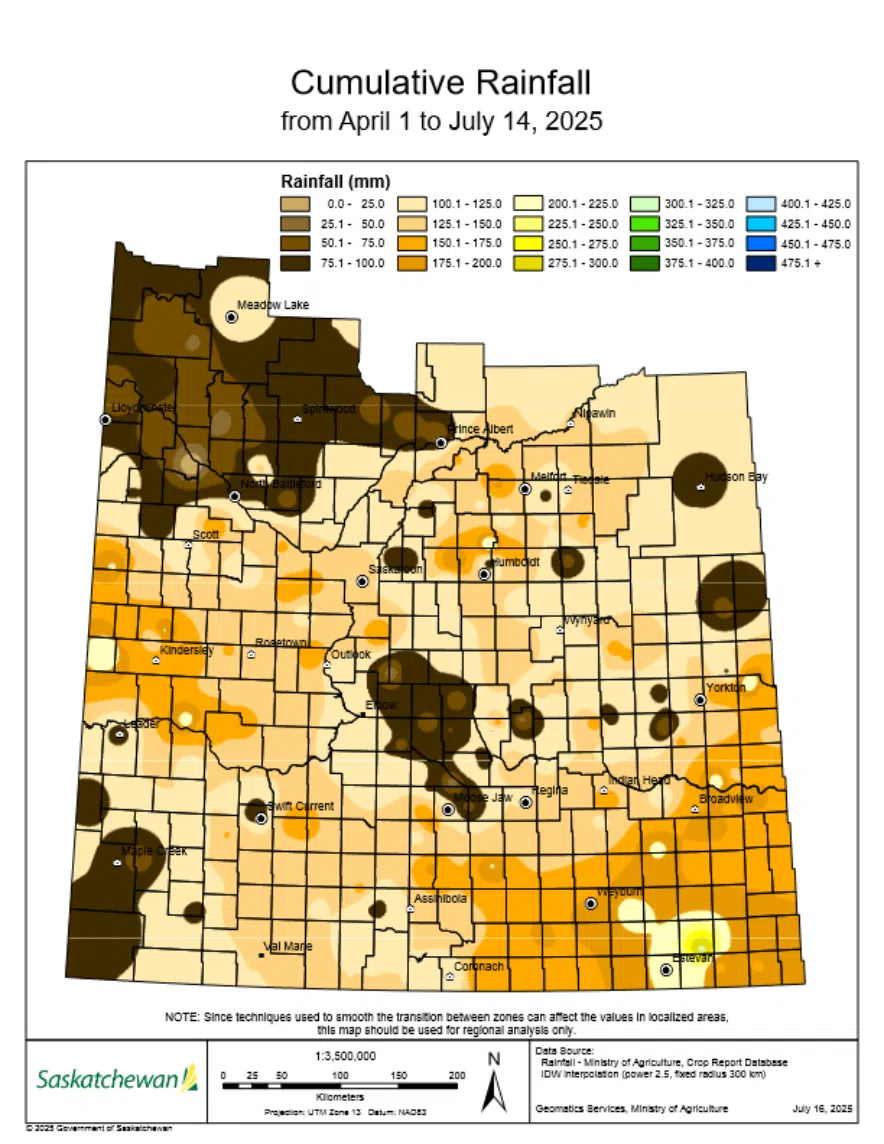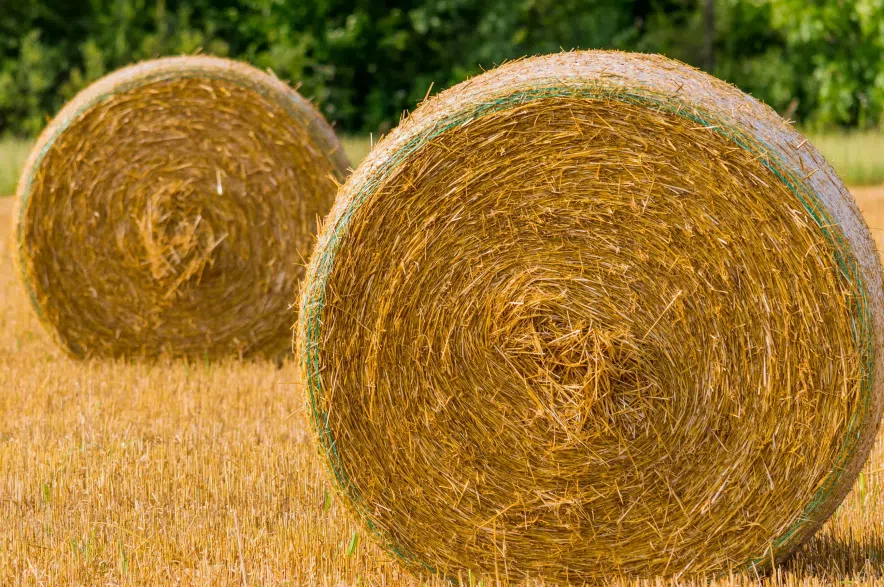Recent rain and cooler weather have offered some relief for farmers in Saskatchewan, but the southwest continues to face moisture shortages and stressed crops, according to Saskatchewan Agriculture’s latest Crop Report.
In Division 7, which includes Moose Jaw, Craik, and Central Butte, cropland topsoil moisture was rated as 56 per cent adequate, 29 per cent short, and 15 per cent very short as of July 14.
Read more:
- Sask. company hopes new video technology makes it big in farming industry
- Addressing farmers’ concerns can’t be done without the feds: Agriculture Minister
- Sask. Farmers, NDP push for drought relief as province outlines new supports
Hay and pasture moisture conditions are similar, with significant southwest areas reporting short or very short moisture, with accompanying crop damage attributed to heat, wind, and lack of moisture.
The report notes that while rainfall totals reached as high as 44 millimetres in Ponteix, 39 mm in Shaunavon, and 37 mm in Lafleche, widespread deficits remain after a dry start to the season.

Cumulative rainfall in Saskatchewan from April 1 to July 14, 2025. (Saskatchewan Agriculture)
Overall, southwest crops are progressing faster than in much of the province, with many ahead of their normal development stage, with 42 per cent of fall cereals and 34 per cent of spring cereals are ahead of normal.
Canola and mustard crops are advancing rapidly but flowering early due to moisture stress, which could impact yields.
Despite scattered rains, many crops are still rated in fair to poor condition in the southwest. Lentils, peas and chickpeas are faring somewhat better than canola and mustard, but there are concerns about yield potential across all crops.
Haying operations are well advanced in the region, with 88 per cent of the first cut completed and 61 per cent of hay baled or silaged, but many producers are cautious about prospects for a second cut unless substantial rainfall occurs soon.
Pest pressure remains moderate, with some reports of grasshopper and gopher damage in drier areas. Fungicide applications continue where warranted, but disease pressure remains generally low.
Province-wide, 60 per cent of Saskatchewan cropland has adequate topsoil moisture, but 32 per cent is short and 8 per cent very short, with pasture and hayland moisture conditions similar.
While the recent weather has helped prevent conditions from worsening, the report emphasized that sustained rainfall will be needed in the coming weeks to maintain crop and pasture growth, especially in the southwest.
More detailed updates, including regional breakdowns and rainfall maps, can be found at saskatchewan.ca/crop-report.
Read more:











